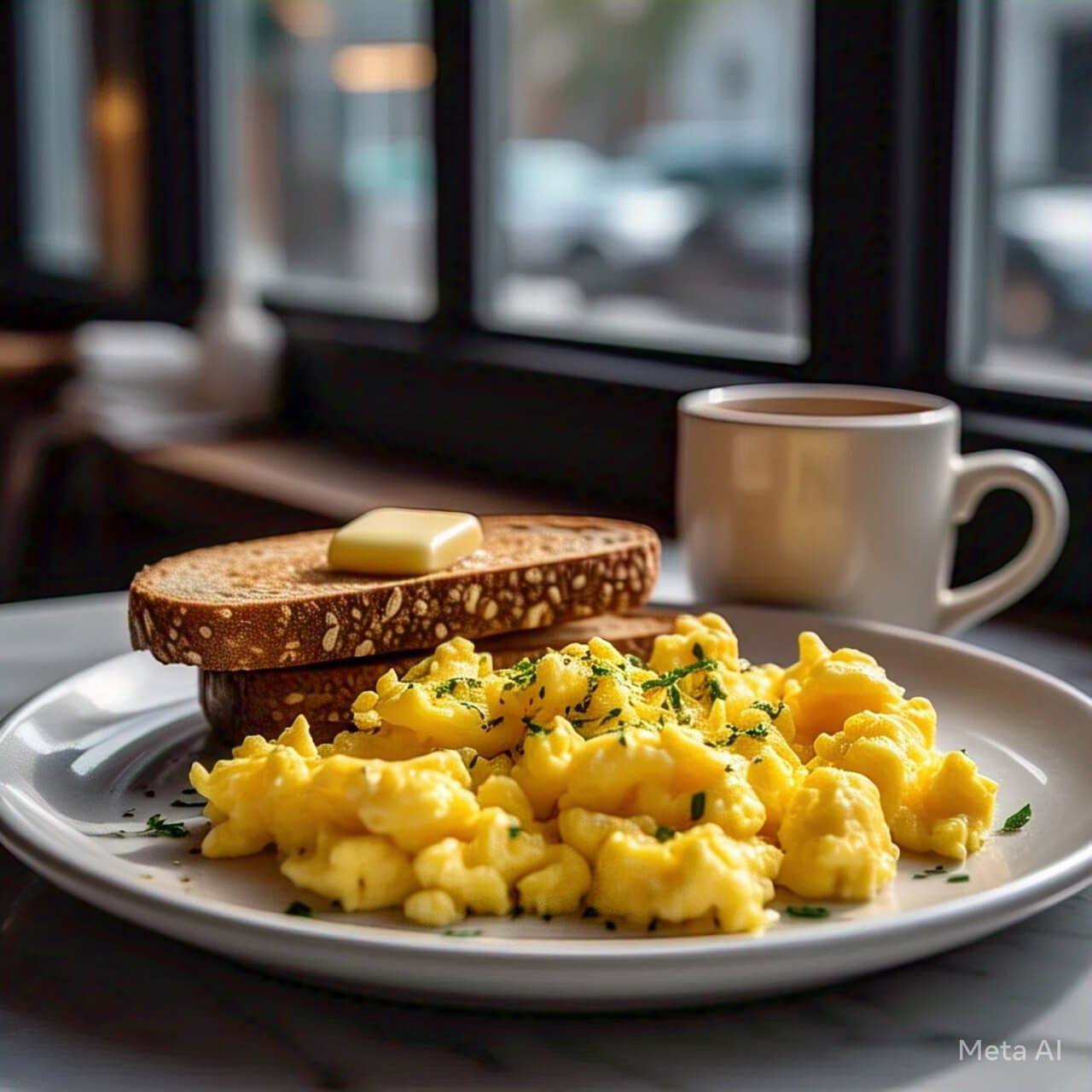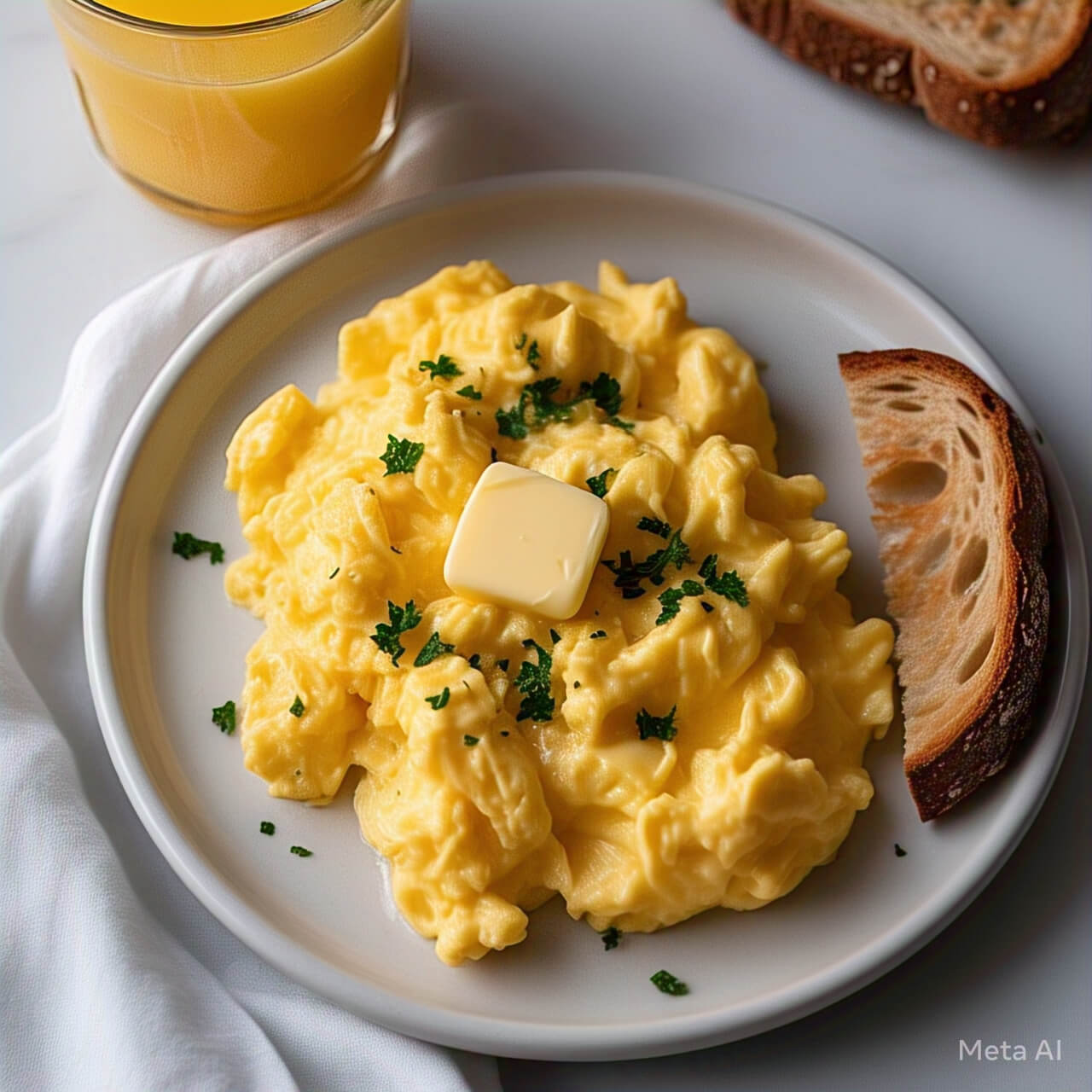Scrambled eggs are a breakfast favorite, but making them fluffy and soft can be tricky. Many people end up with dry or rubbery eggs because of simple mistakes. The secret to perfect scrambled eggs is slow cooking, the right ingredients, and gentle stirring. Start with fresh eggs—they taste better and fluff up nicely. Use a non-stick pan to prevent sticking and burning. Low heat is key; cooking eggs too fast makes them tough.
Adding a little milk, cream, or butter helps keep them creamy. Stir slowly and constantly for even cooking. Remove the eggs from the pan just before they look fully done, as they keep cooking from the heat. Season with salt and pepper at the end to avoid making them watery. Follow these simple steps, and you’ll have light, fluffy scrambled eggs every time.

10 Easy Tips for Fluffy Scrambled Eggs
- Use fresh eggs
- Cook on low heat
- Add a little milk or cream
- Stir slowly
- Don’t overcook
- Use butter for richness
- Season at the end
- Remove before fully set
- Use a non-stick pan
- Keep stirring gently
1. Choosing the Right Eggs
Fresh eggs make the fluffiest scrambled eggs. Older eggs can be watery and won’t hold their texture well. Look for eggs with firm yolks and thick whites. Free-range or organic eggs often taste richer. Crack them into a bowl and whisk lightly—don’t overmix, as this can make eggs dense. Fresh eggs blend smoothly with butter or milk, giving a creamy result.
2. The Best Pan for Scrambled Eggs
A non-stick pan is best because eggs won’t stick or burn. A heavy-bottomed pan spreads heat evenly. Avoid stainless steel unless well-greased, as eggs can stick. A small or medium pan works better than a large one, keeping eggs together for even cooking.
3. Low Heat is the Key
High heat makes eggs rubbery. Cook on low to medium-low heat for soft, fluffy eggs. Slow cooking lets the eggs set gently without drying out. Patience is important—perfect scrambled eggs take about 5-7 minutes.
4. Adding Milk or Cream
A splash of milk or cream makes eggs creamier. About 1 tablespoon per egg is enough. Too much liquid can make eggs runny. Heavy cream gives extra richness, while milk keeps them light.
5. The Right Way to Stir
Stir slowly with a spatula, pushing the eggs from the edges to the center. Gentle folding keeps them fluffy. Don’t scramble too fast—big, soft curds form with slow stirring.
6. When to Season the Eggs
Adding salt too early can make eggs watery. Season with salt and pepper at the end or just before serving. This keeps the texture perfect.
7. Butter vs. Oil
Butter adds flavor and creaminess. Oil works but lacks richness. Use both for extra flavor—heat oil first, then add butter to prevent burning.
8. Knowing When to Stop Cooking
Eggs keep cooking after removing from heat. Take them out when slightly underdone—they’ll finish setting on the plate. Overcooked eggs become dry.
9. Avoiding Common Mistakes
Don’t overcook, over-stir, or use high heat. Fresh eggs and the right pan prevent most problems.
10. Serving Fluffy Scrambled Eggs
Serve immediately for the best texture. Pair with toast, bacon, or fresh herbs. Warm plates keep eggs hot longer.

FAQs About Fluffy Scrambled Eggs
| Question | Answer |
|---|---|
| Can I use water instead of milk? | Yes, but milk or cream adds better flavor. |
| Why do my eggs turn rubbery? | High heat or overcooking causes rubbery eggs. |
| Should I whisk eggs before cooking? | Light whisking is enough—don’t overmix. |
| Can I reheat scrambled eggs? | Yes, but they’re best fresh. Reheat gently. |
| How do I make eggs extra fluffy? | Cook slowly, stir gently, and add dairy. |
This guide will help you make perfect scrambled eggs every time—fluffy, creamy, and delicious.


